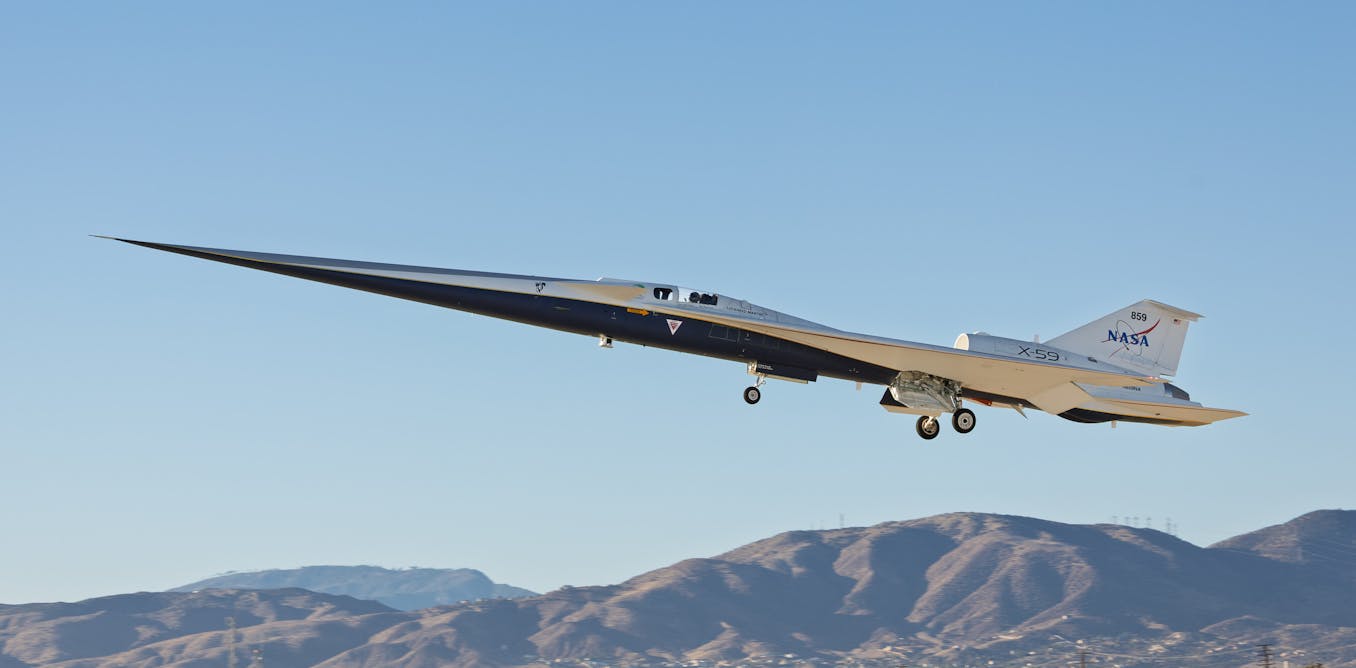the low gravity environment of the moon. But what if we could have more permanent roads on the lunar surface? Well, that might become a reality sooner than we think. NASA has recently revealed plans to create a network of roads on the moon to improve transportation for future lunar missions.
These roads would be created using a special type of concrete made from lunar soil called “Lunarcrete”. This material is not only abundant on the moon but also has the advantage of being able to harden in the vacuum of space.
The construction of these roads would not only make travel easier for astronauts but could also serve as a foundation for future lunar habitats and infrastructure. This is a significant step towards establishing a sustainable human presence on the moon and paving the way for future exploration of other planetary bodies.
As technology advances and science continues to push boundaries, the possibilities for discovery and innovation in the field of space exploration are endless. January 2024 is already shaping up to be an exciting month for scientific breakthroughs, and we can’t wait to see what else the future holds.
Watch the video by John Michael Godier
Video Transcript
Science marches onward and upward, and the new year promises no shortage of developments in science so here are ten interesting scientific discoveries for January of 2024. Number 10. The Shark that Smelled in Stereo 365 Million years ago a shark evolved the ability to smell essentially in stereo,
Making it the first member of the shark family that could do so. This ability is still around, Hammerhead sharks for example have a wide spacing between nostrils that allow them to localize prey more easily. This new shark found in the fossil record of the Sahara desert
In Morocco likewise shows evidence of this ability, but in this case this is the most primitive and early example known that possessed it among the sharks and cartilaginous fish. Stereo abilities are extremely useful and are a common biological feature. Two eyes gives
Depth perception, two ears aural perception, and again here the case is smell perception to zero in on the prey. That this evolved under water is amazing on its own. The sense of Smell both in water and air work very similarly, you can detect molecules in these mediums. Sharks do this too,
They can smell molecules dissolved in seawater, most famously those that make up blood. But not as distantly as is often cited, it’s limited to about a quarter of a mile in the best cases and while their sense of smell is far better than a humans, it’s not that different from most fish.
And shark attacks are rare, with many species either being too small or simply not aggressive enough to present much of a problem. Moreover, if a shark smells blood from a quarter mile away, it’s not too likely to investigate as by the time it smells the blood, it’s gonna be faint,
And whatever was there is probably long gone, meaning that while blood in the water leads to a shark attack is true in a sense, but also can be misleading. Most of the time a drop of blood doesn’t lead to an attack, unless there is a lot of it, as in chumming,
And it seems worthwhile to check out by the shark. But if it’s right on top of you, and it’s on the attack, if it’s the right species it can smell exactly where you are even without the blood.
This ancient shark was among those species, and could do it hundreds of millions of years ago. Number 9. Penguin Naps Last Just Four Seconds … with a catch The chinstrap penguin is a well known wide ranging southern bird that can be found
In Antarctica, surrounding islands but also even southern Chile and Argentina. Each year, it comes time to incubate the eggs. The birds mainline predators are the leopard seals, which will attack them directly and can actually reduce the populations of the birds in certain
Areas by as much as 20 percent during a year. Obviously this means reproduction is highly important for this species, and eggs and infants themselves have many predators of their own. Interestingly, this seems to have led the adult male chinstrap penguins to have developed a very
Peculiar sleep cycle when incubating. They only take naps, which have an average duration of just four seconds, but they do it 10,000 times a day. The reason for this is probably pretty obvious, to stay alert and on the lookout for egg hunting seabirds like Skuas that
Specifically seek out penguin eggs. Perhaps we should alter the colloquialism cat nap, to Penguin naps, because they seem to be the apex nap taking species on planet earth. Not to mention, they are among planet earth’s snazziest formal dressers. Number 8. The Color Changing Nebula
Researchers from Brazil using the VISTA telescope in Chile’s Atacama desert were engaging in a nine year search for signatures of past supernovae. During this search, one single nebula was displaying anomalous behavior unlike any other known nebula in the Milky Way. This nebula is changing colors for unknown reasons.
The nebula is near an anomalous object known as VVV-WIT-12. The WIT part in that catalog designation stands for what is this, and the catalog comprises a list of objects that aren’t quite classifiable through normal means. In this case, we may actually be seeing a very young,
Newly formed star exhibiting variability which is reflecting off the Nebula causing it to change color but also cause variations in brightness over a four year term. Further study with the coming Vera Rubin Observatory should allow for more in depth study and a better understanding of star formation in nebulas. Interestingly as an aside,
If that is indeed the case then it’s a very short term transient phenomenon that we just happened to catch, but it’s possible that most nebulas do this for a time just after new stars ignite and begin fusion. Number 7. The Ice Supervolcano of Pluto
There’s no question that Pluto is an enigma. What was once thought to be a frozen wasteland with not much going on revealed itself as a dynamic world with some very young looking surface features indicating active geology. Recent studies of the New Horizons data set
However have revealed something peculiar that may explain the Freshness of Pluto’s surface. An ice supervolcano the size of the Yellowstone supervolcano here on earth. Known as Kiladze crater, the feature on Pluto seems to be cryovolcanic rather than an impact
Structure and may have ejected enormous amounts of material onto Pluto’s surface just a few million years ago. Interestingly, the surrounding ejecta appear to be chunks of frozen ammonia and water ice. This is particularly interesting because the hypothesized subsurface ocean of liquid at Pluto
Predicts just such a mix of ammonia and water. It’s uncertain if such a mix could be a solvent for life, but it’s interesting nonetheless. Pluto could be an ice shell every bit as habitable as Europa or Enceladus, sporting the same general sorts of active geologic processes.
Number 6. Ancient Antarctic Valleys Locked under Ice Glacial ice is usually the ultimate in landscape changing forces. The ice ages in their wake left huge tracts of land scoured, along with deposits of silt and rocks transported huge distances
That are evident in some areas to this day. Antarctica is no stranger to this process, with many of its glaciers slowly moving like a conveyor belt. But Antarctica wasn’t always like that, and had in the distant past hosted dinosaurs and much warmer temperatures.
As it migrated however, it froze and glaciated leaving its topography forever changed and scoured. Except in one spot. Under the East Antarctic Ice sheet studies using radar measurements from satellites have identified one area where instead of scouring, the glaciers just locked onto the landscape and didn’t move. This preserved area consists
Of valleys and preserved fjord structures, along with the action of former rivers. This preserved topography is believed to have been covered in ice for the last 34 million years, leaving a buried but preserved landscape from the paleogene period. Number 5. The Highest Energy Pulsar
Pulsars are extremely energetic rapidly rotating neutron stars that emit beams of radiation into space. How this works is that rotating pulsars, which can spin hundreds of times a second, tear charged particles from their surfaces, inject them into the pulsar’s very powerful magnetic field,
And that directs them into beams at the poles. This process typically emits energies around 1 trillion electron volts. That was until measurements from a Pulsar in the constellation Vela upset that by being about 200 times more powerful than any other pulsar so far measured.
It’s unclear just how that’s occurring, very highly energetic particles were measured coming from its direction leading scientists to suspect that the Pulsar’s magnetic field lines are somehow disrupted and may have temporarily snapped sending out a hail of unusually energetic particles but if that’s the case then the Pulsar should soon recover and
Return to emitting lower energy. If it does not calm down however, it could signal new physics. Number 4. Roads on the Moon It’s hard to forget seeing the astronauts of some of the Apollo missions driving their lunar rovers kicking up dust and bouncing around in the low gravity
Environment. That terrain was rough. But if we are to ever colonize the moon, that level of trouble in transport could be a problem. Researchers in Germany recently used a powerful laser to melt simulated lunar soil and see if it would be suitable to create
Paving slabs that could be used to pave roads on the moon to facilitate future transport better. It turns out, if you heat lunar soil to 1200 degrees celsius, it will melt and form a black material very comparable to concrete in its properties. Actually instituting that would
Be an issue, you’d need to put a giant energy hungry laser on the moon, but the researchers also found you could do it with a 1.5 meter lens focusing and concentrating sunlight on the surface of the moon, which is eminently more practical. Interestingly, unlike roads on earth,
Any lunar roads we build are sure to still be there billions of years after we first constructed them. Maybe they will be among the last artifacts of humanity to disappear. Number 3. Shipwrecks are Useful It’s long been known that when a ship sinks in the oceans, it will be colonized and used by
Life. Indeed the Titanic is slowly being eaten by rusting iron consuming bacterial colonies called Rusticles and is home to all sorts of deep ocean life. We even intentionally sink ships sometimes as artificial reefs and diving destinations, and other than just a few places
In earth’s oceans that are either too cold or too anoxic, wooden ships do not survive intact on the bottom of the ocean for long because they get colonized by wood boring teredo worms. But now it’s recently been found that shipwrecks are useful in another somewhat unexpected way.
Fishing through bottom trawling tends to wreak havoc on oceanic ecosystems, often basically harvesting everything in their path including sea life we don’t eat. The thing is fishermen using bottom trawling try to avoid shipwrecks because they endanger their equipment. Scientists recently took a look at shipwreck sites off the coast of Scotland
In an otherwise very active fishery and found that the shipwrecks were providing oases for sea life. It’s possible that this may actually be helping the fisheries recover their populations, and that more intentional shipwrecks are desirable, along with the protection of old ones as a new tool in marine conservation and fishery management.
Number 2. The Pristine Star System Star systems are dynamic especially early in their history. Our own star system saw much planetary migration before settling into its current resonances. Much rarer are star systems where this does not occur, and the member planets are basically in the
Same situation as when they first formed. This seems to be the case with the star HD 110067 which hosts six exoplanets, all of them in the sub-Neptune class, which sits between Earth and Neptune in size. The planets are in such a resonance that it’s
Suspected that they are unchanged from their formation a billion years ago. Discovered by TESS in 2020, and later also studied by the Cheops satellite, the system showed dipping patterns inconsistent with what was expected, leading to the discovery of all six planets and also determining their unusual very rhythmic
Resonance. The planets are very close to their star, so it’s likely that they are extremely hot on level with Mercury and venus. The system promises to shed light on planet formation in protoplanetary disks, as well as how sub-neptune worlds form. The star they orbit is sun-like,
But the planets are very different from what we have. They also appear to be low mass planets, suggesting gas atmospheres or water rich deep interiors. The next step is observations with the James Webb Space Telescope to try to characterize these worlds further. Number 1. The High Energy Cosmic Ray from Nowhere
In 1991 the most energetic cosmic ray ever observed, known as the Oh My God Particle, hit earth’s atmosphere and was detected by the Fly’s Eye experiment at the University of Utah. This particle hit with the power of a baseball and was so powerful that no one has been able to
Identify a source extreme enough to have created it. Strangely, while many other high energy cosmic rays have been detected since, none that were anything close to the power of the OMG particle. Until now. And it’s deepened the overall mystery. Researchers in Japan have detected the second
Most energetic particle ever seen, and it’s in the same class as the OMG particle. These particles are sufficiently powerful that scientists can determine what direction they came from, whereas with weaker particles, magnetic fields in space can obscure their origins. They were able to trace OMG particle back to an origin point,
But there wasn’t anything in the area powerful enough to have produced it. This new particle, known as the Amaratsu particle, is actually worse in this regard because its origin is even more puzzling because its originating space basically contains almost nothing at all. It came from the
Local void. Interestingly, the two particles were detected using two separate methods, proving that these things are real and not instrumental flukes. Even a supernova is not powerful enough to accelerate these particles, and the other issue is that particles have a hard
Limit as to what they can sustain as they cross space and interact with radiation, and these particles violate it. Flagrantly. What their origin actually is remains unknown, but could strongly be hinting at new physics of which we currently have no understanding of.
Thanks for listening! I am futurist and science fiction author John Michael Godier currently mildly concerned that the penguins aren’t getting enough quality sleep. As if living in Antarctica wasn’t hard enough, you can’t even get any good sleep down there either. Planet Earth,
I’m tellin’ ya and be sure to check out my books at your favorite online book retailer and subscribe to my channels for regular, in-depth explorations into the interesting, weird and unknown aspects of this amazing universe in which we live.
Video “10 Interesting Scientific Discoveries for January 2024” was uploaded on 01/25/2024 to Youtube Channel John Michael Godier

The post “10 Fascinating Scientific Discoveries in January 2024 – Video ” by GretAi was published on 02/29/2024 by news.gretai.com


































